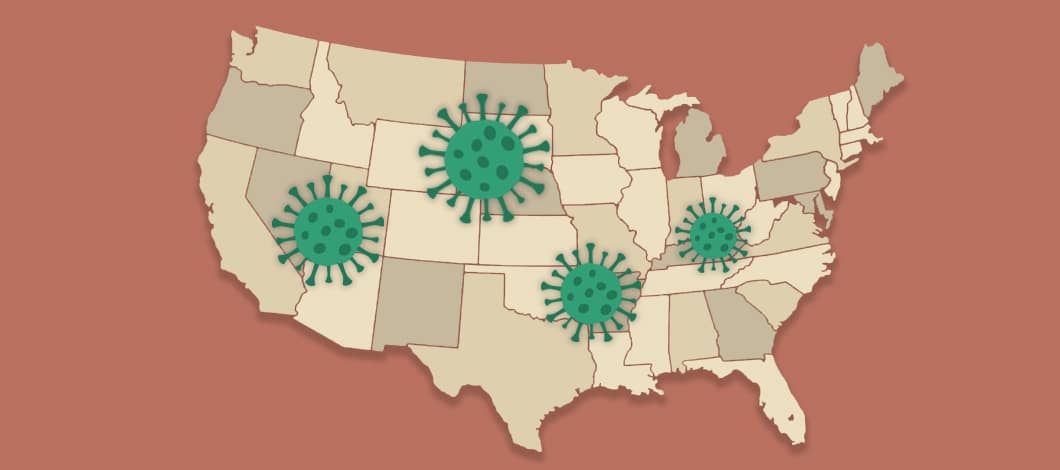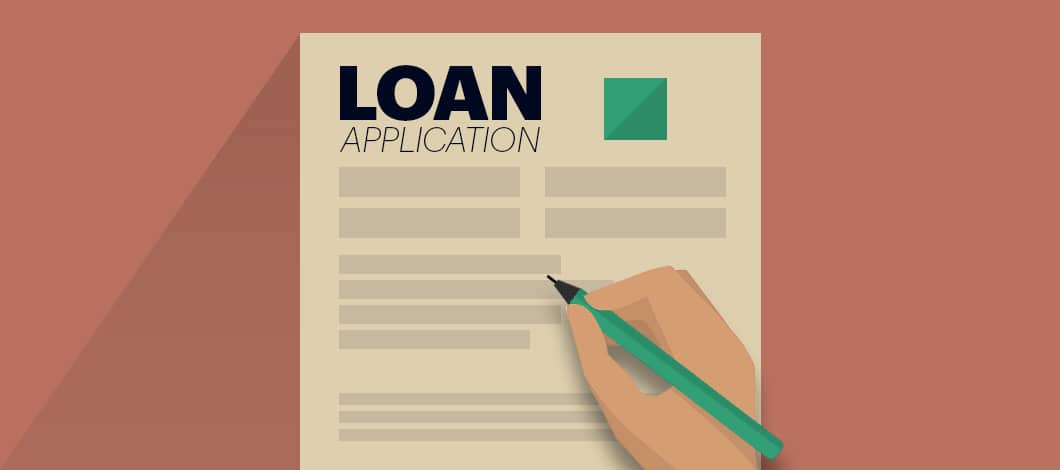The 2021 small business credit survey by all 12 Federal Reserve banks reveals how the COVID-19 pandemic’s weighed on financing.
Let’s review the highlights.
(Note: The small business credit survey was conducted during September and October of 2020, 6 months into the pandemic, and was released in February 2021. It does not reflect economic developments since then.)
Most Firms Struggled Financially During the Pandemic
The pandemic had a dramatic effect on small business financial performance, with 2020 seeing the first time more firms reported decreases than increases in both revenue and employment since the survey was inaugurated in 2016.
In the previous small business credit survey, conducted in the third and fourth quarters of 2019, 56% of firms reported revenue growth during the previous 12 months, while over a third added employees during that period. In contrast, the latest survey from September and October 2020 found 78% of companies reporting decreases in revenue and 46% decrease in employment.
This disruption to revenue and employment put most businesses in a weaker financial position than they had been before the pandemic. The majority of small businesses (57%) rated their financial condition as “fair” or “poor,” with 34% describing their situation as fair and 23% as poor. About one-quarter ranked their condition as “good” (25%), while slightly more than one-tenth assessed their finances as “very good” (11%) and an even smaller number saw their condition as excellent (6%).
Financial Challenges and Responses
The number of firms experiencing financial difficulties rose to 80% from 66% the previous year, according to the small business credit survey.
The most common challenges were:
- Covering costs of operations (65% of firms)
- Meeting debt payments (44%)
- Paying rent (43%)
- Purchasing inventory or supplies (32%)
- Finding available credit (32%)
To meet these challenges, the most common steps companies took included:
- Tapping into personal funds (62%)
- Reducing staff, hours or operations (55%)
- Obtaining funds from resources such as grants, crowdfunding or donations (52%)
- Taking on debt (50%)
- Making late payments (38%)
One effect of these challenges was placing more firms in debt. The number of firms with debt outstanding increased to 79% from 71%. The percentage of firms owing more than $100,000 rose to 44% from 31%.

Operational Disruptions Were Nearly Universal Among Employer Firms
Nearly all firms with employees experienced operational disruptions during the pandemic. Among employer firms, 95% reported an impact on their operations. A majority of firms (56%) had to reduce operations, while nearly half (48%) had to modify operations and about a quarter (26%) had to temporarily close.
The most common factors driving operational disruptions during the pandemic were led by:
- Changes in buyer demand (affecting 58% of companies)
- Government mandates affecting business operations (55%)
- Adapting to health and safety guidelines (52%)
- Government mandates affecting clients’ businesses (34%)
- Worker availability (27%)
- Supply chain disruptions (24%)
These operational disruptions decreased sales for the majority of firms, with 81% reporting a decrease in sales. Sales decreased 10% to 25% for 20% of firms, while 27% saw decreases of 26% to 50% and 26% suffered losses exceeding 50%.
Nearly All Firms Sought Emergency Funding
Nearly all small businesses turned to government emergency funding programs promoted during the pandemic. The survey found 91% of firms applied for some type of emergency financing.
The most frequently used emergency financing resource was the Paycheck Protection Program (PPP), which 82% of employer firms applied for. Out of these, 77% received all the aid they sought. Among firms that didn’t seek PPP funding, 37% didn’t apply because they didn’t think they’d qualify for loan forgiveness.
Other emergency funding programs small businesses turned to were led by:
- Economic Injury Disaster Loans (EIDLs) (sought by 47% of employer firms)
- EIDL grants (35%)
- Grants from state and local governments (28%)
Firms that sought PPP aid generally submitted their applications through banks, with 48% using small banks and 43% using large banks. In the vast majority of instances, applicants had pre-existing relationships with the banks they used, which was the case with 83% of small bank applications and 95% of large bank applications.
Firms which accessed PPP funding were significantly less likely (46%) to lay off employees than those which didn’t (71%). A majority (64%) would apply for more government assistance if it were available. Nearly 4 in 10 said that without additional aid, they would be unable to survive until sales return to pre-pandemic levels.
Applications for Nonemergency Financing Declined
As more firms turned to emergency funding, nonemergency business loan demand decreased. Among firms that didn’t apply exclusively for emergency funding, the number of companies that applied for other forms of financing fell to 37% in 2020 from 43% in 2019.
Companies that didn’t seek funding failed to do so for a number of reasons, including not requiring it, not wanting to take on debt and fear of not being approved. Business owners who feared they wouldn’t receive approval cited several reasons, led by:
- Weak sales (44%)
- Lack of collateral (41%)
- Too much existing debt (36%)
- Low credit score (33%)
- Too new to have sufficient credit history (23%)
Intended usage of financing changed during the pandemic. More firms sought financing to pay for operational expenses, with the number of companies seeking funding for operations increasing to 58% in 2020 from 43% in 2019. Meanwhile, applications to finance expansion decreased to 38% from 56%.
The most popular type of nonemergency financing sought was loans and lines of credit. Among these types of financing, business loans, Small Business Administration (SBA) loans and business lines of credit were the most sought forms of funding.
Approval Rates for Financing Applications Fell
Financing proved more difficult to obtain than before the pandemic started. While 51% of firms that applied for nonemergency financing in 2019 received all the funding they requested, in 2020 the percentage fell to 37%.
This trend impacted applications for loans, lines of credit and cash advances. In 2019, the number of firms that received at least partial approval for these types of financing stood at 83%. In 2020, this fell to 76%.

Applications for Bank Loans Increased, While Online Lending Decreased
When it came to lending sources, borrowers favored banks. The number of borrowers who turned to small banks to apply for loans, lines of credit or cash advances rose to 43% from 36%, making this the most popular resource. Companies who applied for financing from large banks rose to 42% from 40% in 2019.
Meanwhile, the number of companies submitting applications to online lenders fell to 20% from 33%. Firms with lower credit scores were more likely to use online lenders or nonbank finance companies. Among companies with strong credit scores who sought nonemergency funding:
- 45% applied at large banks
- 48% applied at small banks
- 11% applied with online lenders
- 11% applied with nonbank finance companies
- 9% applied at credit unions
- 3% applied at community development financial institutions (CDFIs)
In contrast, among companies with low credit scores:
- 38% applied at large banks
- 38% applied at small banks
- 35% applied with online lenders
- 23% applied with nonbank finance companies
- 9% applied at credit unions
- 5% applied at CDFIs
Applicants were most satisfied with credit unions and small banks and least satisfied with online lenders.
Most Firms Anticipated Continued Challenges in 2021
After half a year into the pandemic, most firms anticipated continuing the fallout in 2021. Firms were nearly evenly split about whether to expect a revenue decrease or increase over the next year, with 41% anticipating a decrease and 40% expecting an increase. Companies were more optimistic about hiring new employees in the coming year, with 31% expecting to hire more workers while 16% expected to hire less.
When asked to identify the biggest challenge they anticipated in the coming year, weaker demand for products and services was the most common concern, cited by 37% of employers. Government-mandated restrictions came in next at 26%. followed by credit availability at 13%.
Looking ahead to when sales would return to pre-pandemic levels, 41% of firms expected it would take until the second half of 2021, while another 29% expected a sales rebound to take until 2022 or later. Just 12% reported sales at or above normal. Among firms with sales below normal, 30% considered it somewhat or very unlikely their company would survive without additional government assistance.
Small Business Credit Survey: Plot Your Post-Pandemic Recovery
The small business credit survey shows most small businesses experienced financial struggles during the first 2 quarters of the pandemic and many anticipated continued challenges going into 2021. Nearly all companies with employees experienced disruptions forcing them to reduce, modify or close operations. Most businesses sought emergency funding while displaying less inclination to seek other financing resources. Getting approved for financing proved difficult, and more firms turned to banks rather than online lenders.
However, both banks and online lenders remain viable sources of financing, and when you’re struggling with cash-flow issues, it pays to consider all available resources. If you’re still in the process of recovering from the economic impact of the pandemic, or if you need financing for other reasons, take a few minutes to fill out our free, no-obligation prequalifying application and we’ll let you know in minutes what types of loan options may be available to you.










